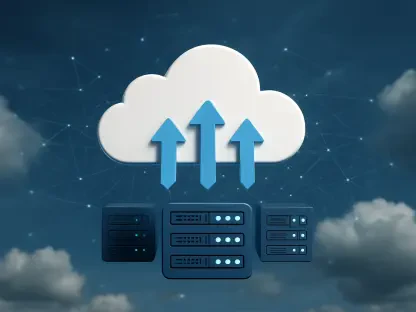In an era where data fuels every facet of enterprise operations, the ability to track its journey through complex systems has become a critical challenge for organizations worldwide, and data lineage, the process of tracing data from its origin to its final destination while capturing every transformation along the way, stands at the forefront of modern data governance. With the proliferation of IoT devices generating massive datasets, the rapid adoption of AI technologies demanding reliable inputs, and increasingly stringent regulatory frameworks, the need to understand data’s full lifecycle has never been more urgent. This exploration delves into the transformation of data lineage practices, moving away from outdated, reactive methods toward innovative, real-time solutions that promise to redefine how businesses manage and trust their data. The stakes are high, as failing to adapt risks not only compliance penalties but also the erosion of stakeholder confidence in an increasingly digital landscape.
The Challenges of Traditional Data Tracking
Unpacking Data Archaeology
The foundation of many organizations’ data management strategies rests on a reactive approach often termed “data archaeology,” where teams painstakingly piece together data histories only after issues surface. This method depends heavily on manual documentation, outdated spreadsheets, and fragmented institutional knowledge scattered across departments. Such practices, while perhaps sufficient in simpler times, are woefully inadequate in today’s high-speed, data-intensive environments. The labor-intensive nature of reconstructing data paths after the fact often leads to delays in identifying errors or breaches, exposing companies to operational inefficiencies. Moreover, this retrospective approach lacks the scalability needed to handle the sheer volume of data generated by modern systems, leaving organizations vulnerable to oversight and missteps in an era where precision is paramount.
Compounding the problem, data archaeology struggles to provide a cohesive view of data transformations across interconnected systems, often resulting in incomplete or inaccurate lineage records. As businesses integrate more complex technologies like cloud platforms and AI-driven analytics, the gaps in these traditional methods become even more pronounced. Regulatory bodies now demand real-time accountability, and the slow, disjointed process of piecing together data stories cannot meet these expectations. This mismatch not only hampers compliance efforts but also undermines trust in data quality, as decision-makers are forced to rely on potentially flawed or unverifiable information. The urgent need for a more robust framework is clear, as clinging to these outdated practices risks both operational integrity and competitive standing in a rapidly evolving market.
Struggling with Scale
The inefficiencies of traditional data tracking are magnified when viewed against the backdrop of today’s digital scale, where data volumes grow exponentially with each passing day. Reactive methods, designed for smaller, less dynamic datasets, falter under the weight of information produced by IoT ecosystems and globalized operations. The rapid deployment of AI systems further exacerbates this strain, as these technologies require vast, diverse datasets that must be traceable and verifiable to ensure accurate outputs. Without a systematic way to map data flows in real time, organizations find themselves mired in a cycle of constant catch-up, unable to address issues before they escalate. This scalability challenge is not merely technical but strategic, as lagging data governance can stall innovation and hinder responsiveness to market shifts.
Additionally, the fragmented nature of legacy systems often means that knowledge about data lineage resides in silos, inaccessible to those who need it most during critical decision-making moments. This disconnection creates blind spots that can lead to costly errors, especially in industries like finance or healthcare, where precision and transparency are non-negotiable. As data ecosystems become more intricate, the inability to scale traditional tracking methods threatens to widen these gaps, leaving organizations exposed to risks that could have been mitigated with a more forward-thinking approach. The pressure to modernize data lineage practices is undeniable, driven by the sheer complexity of modern infrastructures and the relentless pace of technological advancement.
The Regulatory Imperative
Navigating a Complex Landscape
As data becomes increasingly central to business operations, the regulatory landscape governing its use has grown more intricate, placing unprecedented demands on organizations to maintain precise lineage records. Frameworks such as GDPR, the Digital Operational Resilience Act (DORA), and the EU AI Act mandate a level of transparency and accountability that leaves no room for ambiguity in how data is sourced, processed, and governed. These regulations are not mere guidelines but enforceable standards that require businesses to demonstrate the full lifecycle of their data at a moment’s notice. The push for such rigor stems from a broader societal demand for trust in digital systems, where mishandling data can have far-reaching consequences for privacy and security. Compliance, therefore, is not just a legal obligation but a cornerstone of maintaining public and investor confidence.
Beyond the immediate need for adherence, these regulatory requirements are evolving to address emerging technologies, particularly AI, which amplifies the importance of traceable data. Authorities are increasingly focused on ensuring that automated systems operate on verified, ethical datasets, making lineage a critical component of governance. The challenge lies in aligning internal processes with these external mandates, especially for multinational entities navigating a patchwork of regional laws. Failure to adapt can result in operational disruptions, as regulators demand detailed audits that legacy systems struggle to produce. This dynamic underscores a pressing reality: robust data lineage is no longer a peripheral concern but a fundamental requirement to operate within the bounds of global standards and expectations.
Consequences of Failure
The risks associated with non-compliance in the realm of data governance are both severe and multifaceted, extending far beyond financial penalties to impact an organization’s very foundation. Hefty fines imposed by regulatory bodies for breaches of laws like GDPR can cripple budgets, but the damage to reputation often proves even more devastating. A single lapse in data transparency can erode trust among customers, partners, and investors, leading to long-term relational and market losses. In highly regulated sectors such as finance, where accountability is scrutinized relentlessly, such failures can trigger cascading effects, including legal battles and restricted operational licenses. The stakes are clear: without a reliable mechanism to track data lineage, organizations risk becoming cautionary tales in an unforgiving digital economy.
Moreover, the absence of effective lineage practices can exacerbate internal vulnerabilities, as undetected data errors or misuse go unresolved until they manifest as major crises. Stakeholders now expect not only compliance but proactive assurance that data is handled with integrity, and failing to meet this expectation can diminish competitive edge. Regulatory non-compliance often signals deeper systemic issues, prompting scrutiny that can unearth unrelated weaknesses, further compounding the fallout. As global oversight intensifies, the cost of inaction becomes prohibitive, pushing organizations to rethink their approach to data tracking. The message is unequivocal: investing in modern lineage solutions is not just a safeguard but a strategic imperative to preserve trust and ensure sustainability in a tightly regulated world.
Digital Twins: A New Frontier
Real-Time Data Modeling
Emerging as a groundbreaking solution to the limitations of traditional data tracking, digital twins offer a dynamic, real-time representation of an organization’s data ecosystem that transforms how lineage is managed. These sophisticated models create a live, continuously updated mirror of data flows, capturing every transformation, ownership detail, and governance rule in a unified, accessible view. Unlike static documentation or manual records, digital twins provide granularity down to individual data attributes, allowing for precise auditing and analysis. This capability marks a significant departure from the reactive nature of past methods, positioning businesses to anticipate and address issues before they arise. The technology’s ability to reflect the current state of data systems ensures that decision-makers have accurate, actionable insights at their fingertips, revolutionizing data governance.
The proactive advantages of digital twins extend to their capacity to streamline responses to regulatory inquiries, a critical need in today’s compliance-driven environment. By offering a comprehensive snapshot of data lineage, these models enable organizations to quickly demonstrate adherence to standards, reducing the time and resources spent on audits. Furthermore, the real-time nature of digital twins supports continuous monitoring, identifying anomalies or risks as they emerge rather than after the damage is done. This shift from hindsight to foresight not only enhances accountability but also builds confidence among regulators and stakeholders. As data ecosystems grow more complex, the adoption of digital twins represents a forward-thinking approach that aligns with the demands of a digital-first world, ensuring both precision and agility in governance practices.
Proactive Advantages
Digital twins redefine the landscape of data management by empowering organizations to move beyond mere compliance to leveraging lineage as a competitive tool. Their ability to provide a connected, real-time view of data flows means that businesses can proactively address potential regulatory issues before they escalate into violations. This preemptive capability is invaluable in an era where regulators expect immediate, detailed responses to inquiries about data handling. By mapping out every stage of the data lifecycle with precision, digital twins eliminate the guesswork and delays inherent in traditional methods, ensuring that audits are conducted efficiently and accurately. The result is a significant reduction in compliance-related stress, allowing focus to shift toward strategic priorities.
Equally important, the technology fosters a culture of transparency within organizations, as stakeholders gain visibility into data processes that were previously opaque or fragmented. This clarity not only aids in meeting external mandates but also enhances internal collaboration, as teams can access a shared, reliable source of truth about data lineage. Digital twins also enable predictive analytics, allowing businesses to model potential changes in data systems and assess their impact before implementation. Such foresight minimizes disruptions and optimizes resource allocation, turning data governance into a proactive driver of efficiency. As industries continue to navigate digital transformation, the adoption of digital twins stands out as a pivotal step toward mastering the complexities of modern data environments with confidence and control.
Beyond Compliance: Strategic Benefits
Empowering AI and Resilience
At the intersection of data lineage and cutting-edge technology lies a critical insight: robust lineage is the bedrock of trustworthy AI systems, ensuring that automated decisions are grounded in reliable, traceable information. As AI becomes integral to business operations, the demand for explainable outcomes intensifies, driven by both regulatory bodies and public expectations. Digital twins address this by providing a clear map of the datasets feeding into AI models, allowing organizations to verify the integrity and ethical sourcing of their inputs. Without such transparency, the risk of biased or erroneous outputs looms large, undermining trust in AI applications. By anchoring AI in verifiable data lineage, digital twins pave the way for scalable, accountable innovation that aligns with global standards for responsible technology use.
Beyond supporting AI, digital twins enhance operational resilience by enabling organizations to simulate scenarios and test system responses in a controlled, virtual environment. This capability is invaluable for anticipating how data systems might behave under stress or during major changes, such as mergers or technology upgrades. By identifying potential weaknesses before they manifest in real-world operations, businesses can implement safeguards that prevent costly downtime or data breaches. The strategic foresight offered by digital twins transforms data governance from a reactive burden into a proactive asset, equipping organizations to navigate uncertainty with agility. This dual benefit—supporting AI integrity and bolstering resilience—underscores the broader value of modern lineage tools in driving sustainable growth.
Operational Agility
The strategic advantages of digital twins extend into the realm of operational agility, where they empower organizations to manage change with unprecedented precision and confidence. By providing a real-time, holistic view of data ecosystems, these models allow businesses to assess the impact of proposed changes—whether technological, regulatory, or structural—before they are enacted. This predictive capacity minimizes the risk of unintended consequences, such as system incompatibilities or compliance gaps, that often accompany transformation initiatives. In industries where adaptability is a competitive differentiator, the ability to navigate change seamlessly positions companies to capitalize on opportunities while mitigating disruptions, turning data lineage into a catalyst for progress.
Furthermore, digital twins facilitate cross-functional collaboration by offering a centralized platform where data insights are accessible to all relevant stakeholders, from IT teams to executive leadership. This shared understanding breaks down silos, enabling faster, more informed decision-making that aligns with organizational goals. The technology also supports long-term planning by allowing simulations of future data scenarios, helping businesses prepare for evolving market or regulatory demands. As a result, data governance evolves from a compliance checkbox into a strategic enabler, fostering an environment where agility and innovation thrive. The message is clear: embracing digital twins is not just about solving today’s challenges but about building a foundation for tomorrow’s success.
Reflecting on a Data-Driven Shift
Looking back, the journey of data lineage reveals a profound transformation in how enterprises approach their most vital asset. The shift from the painstaking efforts of data archaeology to the dynamic, real-time capabilities of digital twins marks a turning point in addressing both regulatory mandates and strategic imperatives. This evolution highlights a critical lesson: clinging to outdated methods once risked severe penalties and eroded trust, while adopting innovative tools empowers organizations to turn challenges into opportunities. Moving forward, the focus should center on integrating these advanced solutions into core operations, ensuring that data governance becomes a seamless driver of trust and innovation. Businesses are encouraged to prioritize scalable, proactive technologies that not only meet today’s demands but also anticipate tomorrow’s complexities, securing a resilient path in an ever-changing digital landscape.









